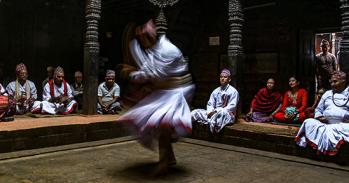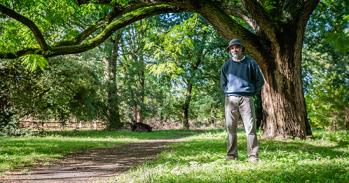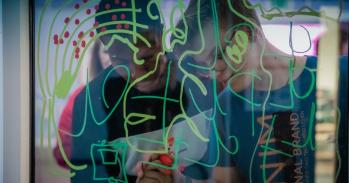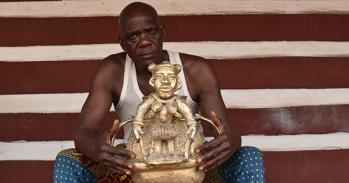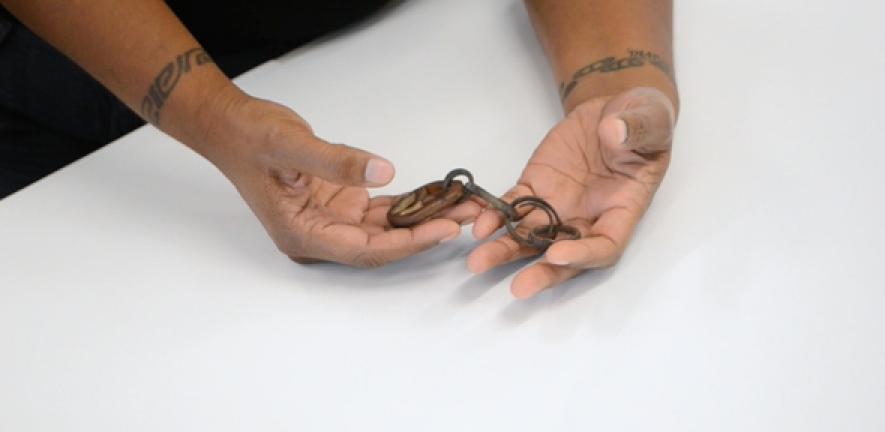
What can museum collections tell us about people and their stories? On Sunday 25 October 2015, the Museum of Archaeology and Anthropology will host an event that asks profound questions about objects and identities with the focus on West Papua.
What can museum collections tell us about people and their stories? On Sunday 25 October 2015, the Museum of Archaeology and Anthropology will host an event that asks profound questions about objects and identities with the focus on West Papua.
This is our value, this is our spirit … but how are my people? This makes me cry – hard, hard cry. How are my people?
Benny Wenda
Eighteen people take part in Alana Jelinek’s film Knowing. You hear their voices but you never see their faces. The camera records only their hands as they touch, turn, and sometimes pick up, a succession of objects placed on a white table. The smooth surface, sterile and cool, contrasts with the raw sense of nature locked into the things set out upon it. The juxtaposition is one of man-made and hand-made. Machines make polished perfection; hands make an uneven beauty that is richer still.
A bracelet plaited from grass, a wooden shield hewn with a stone tool, a fish trap woven from rattan, a string of beads made from tree resin. These humble things are the stars of Jelinek’s film; the stories wrapped up in them are theirs alone. The hands that touch make connections with shapes and materials; they create a patina of human wear and tear. As we watch, the fingers on the screen become our fingers – and, through our nerve endings, our antennae, we ask questions.
Who made these things, who has used them, where are these things now? And the hands we see – who do they belong to? The voices we hear: where are they from, do they belong to villagers, scholars, curators, or all three? The absence of faces hints at the disjuncture between people, places and things. What are things without people – what happens when things become museum objects, items to be labelled and catalogued?
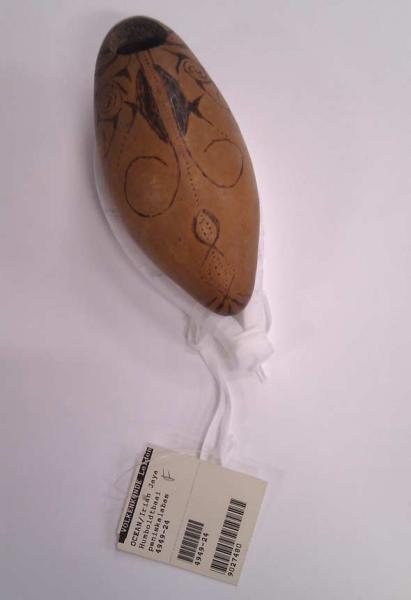
Jelinek’s film will make its debut on 25 October as part of a celebration of the art and cultures of West Papua staged by Cambridge’s Museum of Archaeology and Anthropology. The event ‘Knowing West Papua’ includes performances by Papuan musicians, a last chance to experience the exhibition 'Sounding Out the Morning Star: Music and West Papua', and talks about West Papua given by artists, musicians and Cambridge researchers.
Knowing is not a documentary. The film doesn’t set out to provide answers but, rather, to tease out some of the fragile stories told by material culture. Jelinek is neither anthropologist nor archaeologist; she’s an artist and self-taught film maker. She trained as a painter but her work came to be more about ideas than about creating images. For the past seven years, increasingly curious about the narratives that exist in objects, she has worked with museum collections.
The 48 minutes of Knowing have been edited down from 22 hours of filming in which a selection of objects was retrieved from the collection of the Volkenkunde in the Netherlands and those of a number of private individuals. The finished artwork is slow-paced and reflective.
“I wanted to bring together people who are variously connected with West Papua, people with different relationships to regimes, past and present, and to see how their knowledge of the objects varied because of these different cultural starting points. I wanted everyone to have the opportunity to talk about their own material culture and the material culture of others,” says Jelinek.
“Everyone chose objects from their own region to talk about. In the case of Dutch people, whose material culture is not collected by the ethnology museum, participants brought objects from a similar period to talk about.”
We’re accustomed to films that tell, instruct, inform. Knowing is both reticent and playful, even gently humorous. In between objects, the screen goes black while the voices continue; it’s frustrating to discover how carelessly you’ve looked at an object that’s now disappeared. In placing objects in front of people, Jelinek invites their thoughts, any quizzing is gentle. The voices we hear are hesitant and respectful, shy even, in identifying what is set before them.
“It’s decoration for the arms,” says a male voice as hands reach out to bracelets crafted from grass. “I am not allowed to put it on.” A female voice explains that her father gave her similar bracelets to wear when there was a fancy dress day at school in the Netherlands. “You go like us,” her father had said. At school people would ask what the children were. “What are you?” “I’m Little Red Riding Hood.” “What are you?” “I’m a Papuan.” In this little tale lies a wealth of meaning about identity.
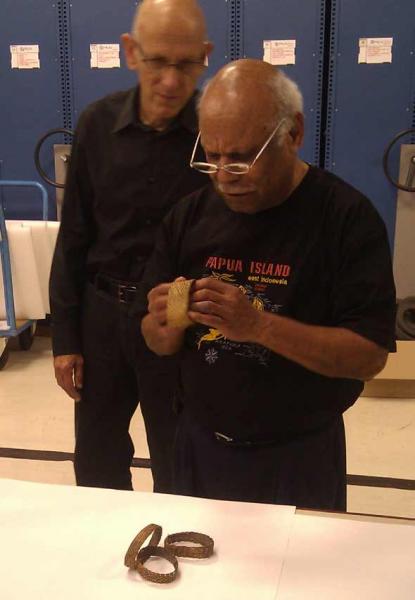
Male hands wiggle into a fish trap and a man’s voice explains how fish swim in and can’t get out. “We were a poor family – everything we could eat was welcome.” In the communist times of the 1960s life was hard; a catapult, the voice explains, will kill birds and squirrels. In this roundabout way, Jelinek hints at the troubled history of West Papua, a territory with an indigenous population that has suffered terribly during waves of colonialism, most recently as part of Indonesia.
Knowing carefully credits by name all those who participated in making the film. Many have names unfamiliar and ‘exotic’ to Europeans. Among them is Benny Wenda, leader of the West Papua independence movement, who has lived in exile in the UK since escaping from prison in Indonesia in 2002. Wenda’s hands hold a multipurpose tool from the highlands: it will help to build a house, cultivate land, split wood – it can also be a weapon.
Weapons are made to treasure and to pass on as well as to use. A carved and decorated dagger is made from a human bone. The imagery incised into its surfaces tells stories about the Amsat, an indigenous culture infamously associated with head hunting and cannibalism. The dagger may even have been used to get brains out of the skulls of those killed through head hunting.
Today these objects are in a museum; each one carries a label which, in the hands of people touching them, seems like an affront. Some objects are made to display, some to hide; some are valuable, some are not. Many objects important to people are not represented in museum collections – they are too precious or too private. Museums tell only a fraction of human stories.
The session organised by Jelinek was the first time that Wenda had seen and handled the objects from West Papua held in the Volkenkunde. How do you feel, Jelinek asks, seeing these things? It upsets me, Wenda replies, but at the same time it is good that these precious things are kept safe. “This is our value, this is our spirit … but how are my people? This makes me cry – hard, hard cry. How are my people?” he says.
For details of ‘Knowing West Papua’ on 25 October 2015, and how to book (free) tickets, go to https://www.festival.cam.ac.uk/events/knowing-west-papua
Inset images: A penis sheath in the Volkenkunde collection stores in s'Gravenzande, Netherlands (Katharina Haslwanter); Gershon Kaigere and Peter Waal in the Volkenkunde collection stores in s'Gravenzande, Netherlands (Katharina Haslwanter).

The text in this work is licensed under a Creative Commons Attribution 4.0 International License. For image use please see separate credits above.

